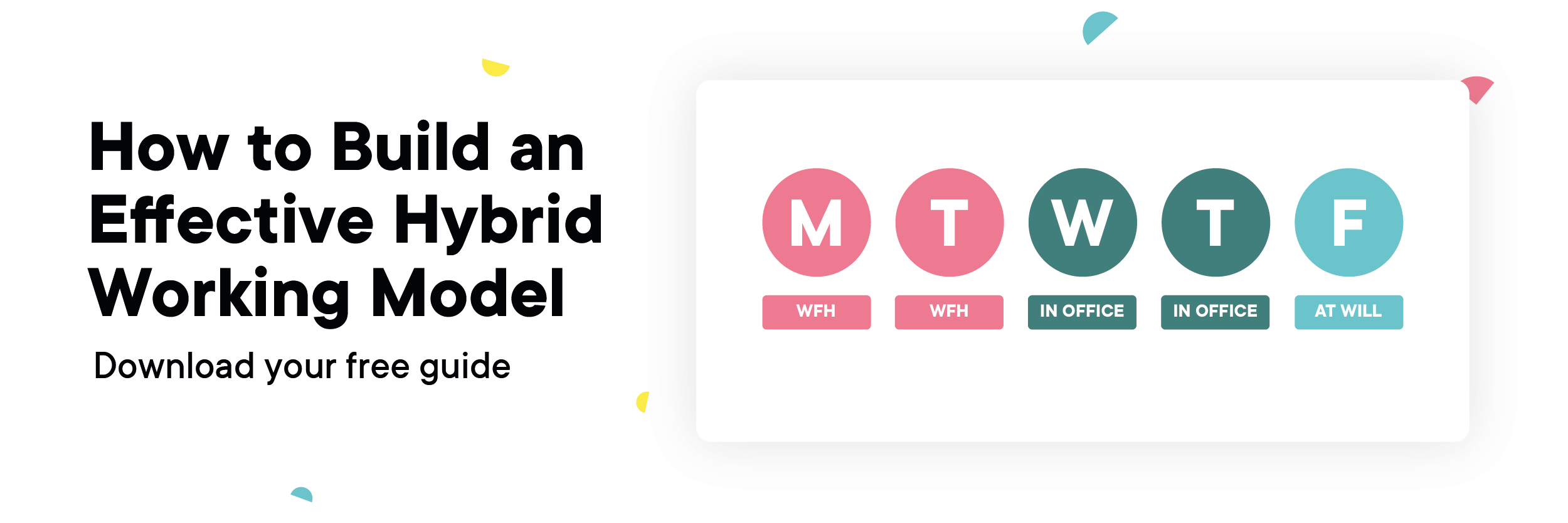Getting hybrid right is still very much a work in progress. With so many variables at play within each company’s setup, it can be difficult to know what will (or won’t) work for your team.
And with employees seeking clarity on what’s expected of them in this new world of work, it’s crunch time for many businesses.
Whether it’s getting the strategy right or nailing down the design for office space, it’s important that there’s reasoning behind every decision – and that those reasons benefit both the business and the team.
There’s no one-size-fits-all to making hybrid work and company culture isn’t something you can apply a cookie-cutter approach to, however, we thought it would be useful to share what we're doing at Kitt to get our team connecting again.
Intentional in-office days
One of the biggest challenges around the implementation of hybrid working is clarifying the role that in-office days now have for a business and its people.
Working remotely for two years has provided people (who were able to) with the opportunity to ditch the commute and reassess their work-life balance. And now, they need a reason to change that - however frequently they’re being asked to come in.
Perks are one approach, but the majority are short-lived and will lose their appeal if they’re not rooted in something deeper. A sense of purpose is what’s leading the office return, and company moments that foster a sense of belonging are a key driver in achieving that.
At Kitt, we have two days a week where everyone is in. On those days we aim to bring people together with planned moments such as team lunches and all-hands meetings, which we find is a great way to keep people connected throughout the week.
Other ideas could include:
- Team strategy days
- Company ‘show and tells’
- Collaborative cross-team workshop
- Fireside chats with industry leaders
Workspace design
While it’s crucial to be intentional with the planning of in-office days, the same can be said when it comes to designing workspace. Collaboration is the buzzword in the new world of work, but in practice it’s much more than an open-plan office.
Understanding how different teams intend on using your space will help inform your office design. For example, if your creatives plan on workshopping on a designated day each week, they’ll need a large, collaborative space with a whiteboard or table to help bring those ideas to life.
Think about the type of seating, too. Our latest report found that 25% of workers now want to be able to sit away from desks when they’re in the office, and these new preferences should inform your workspace design.
Some businesses are also exploring the role that technology can play in this process, adopting technology that tracks office occupancy and the most utilised areas of workspace.
But these advances aside, the simplest way to make headway here is to speak with your team. Conduct a workplace survey, or use team leads to establish a preferred way of working from every corner of the business.
We’ve designed our office at Kitt to focus on collaboration, connection and culture, with breakout spaces, touchdown areas and long communal tables in the kitchen for our team lunch and company get-togethers.
Designing with intention is an aspect of hybrid work that many businesses are struggling to get right, and as mentioned in our recent workplace culture panel, it’s something that ultimately requires consultation as well as iteration.
Clarity in hybrid policies
We've spoken to hundreds of businesses this year alone, and it's clear that many are facing challenges in navigating hybrid working. Regardless of the steps you take, there’s danger in not providing clarity because you’ll not be giving people the opportunity to decide if they’re in or out.
Similar to the point around planning in-office days, being clear about what work gets done in the office vs. at home (and providing ongoing communication and feedback about those decisions) can help improve employee attitudes to work.
There’s also an element of flexibility to be considered. The ‘this is why we’re doing things this way’ statement needs to be clear, but empowering teams to make bespoke arrangements within that will garner more trust in leadership and ultimately create a structure that everyone can get on board with.
We operate a three-day in-office week at Kitt. Wednesdays and Fridays are fixed for team activities, and the third day is left for teams to decide between themselves based on what works for them. You could also consider having flexibility outside of core working hours, to give people a further opportunity to manage their work-life balance.
Finding the right balance for your team
We’ve found that the above works for our team at Kitt, but every business will have a unique approach to its hybrid working model. That said, we’re starting to see trends in businesses with a similar outlook, aiming to bring their teams together in person for at least a small chunk of the week.
If you’re not sure which strategy is right for your business, check out our guide to some of the most effective hybrid working models from a design and strategy perspective.


